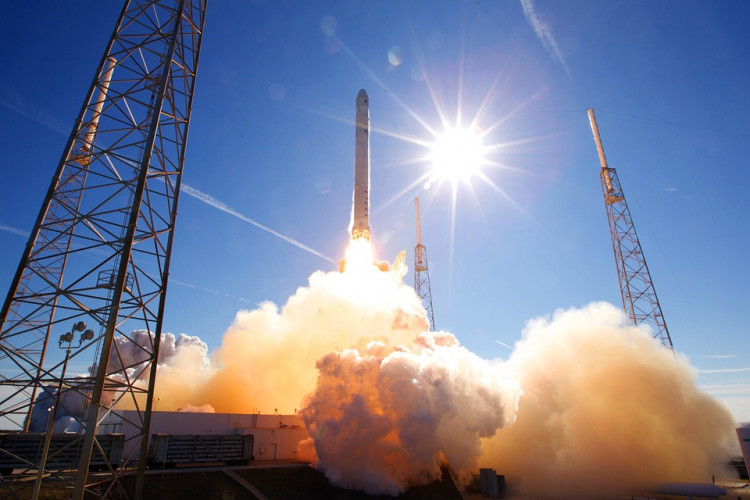The SpaceX Starlink internet satellite omega constellation, which will ultimately consist of some 12,000 orbiting satellites, is fantastic technical achievement astronomer are now beginning to hate.
The problem with the small Starlink satellites is they reflect significant amounts of light from the Sun. A video shared on Twitter and taken from The Netherlands show the 60 satellites looking like a long, gleaming train of lights moving through space.
And here lies a problem that astronomers always face when imaging distant objects in the Universe, but which has now become more serious with the deployment of Starlink. That problem is light pollution.
Astronomers said that whenever a super bright object such a Starlink satellite passes through the field of view of a long-exposure telescope shot, the observation is muddied. Light from that object tears through the image, causing a long, bright streak through the sky.
Satellites can be especially bright since they're often made from reflective materials. Their shiny solar panels also reflect bright light from the Sun.
"If it was just a point in an image, that wouldn't be too bad," said Phil Bull, a theoretical cosmologist at the Queen Mary University of London.
"You could just ignore the bit around that point. But because it's a big line going through your image, it really gets in the way."
NASA estimates there are more than 5,000 satellites orbiting the Earth. Some 2,000 of these remain operational.
Satellites have caused the occasional streak astronomers to dread. But with the addition of SpaceX's Starlink constellation, the number of operational satellites will increase significantly. Worse, Starlink will later be joined in low Earth orbit (LEO) by other satellite constellations from OneWeb, Telesat, Kepler Communications and Amazon.com.
The addition of more than 20,000 satellites in LEO greatly increases the risk of satellites streaking across a telescope's sightline.
"You can go into your backyard with some binoculars or even the naked eye, and you can see plenty of satellites whizzing around a few hours past dusk or before dawn," said Bull. "It's really not like they just instantly switch off when the sun sets on Earth."
Astronomers are concerned there is very little public data about how giant constellations can pollute the night sky with light.
The discussion about light pollution took front and center over the weekend after amateur astronomers released footage of the Starlink satellites, showing them to be much brighter than people imagined.
"There are plenty of us in the community that was aware of this concern, but until people saw with their own eyes this freight train of satellites, it didn't really jump into the public consciousness," said Mary Knapp, a research scientist studying exoplanets at MIT Haystack Observatory.






